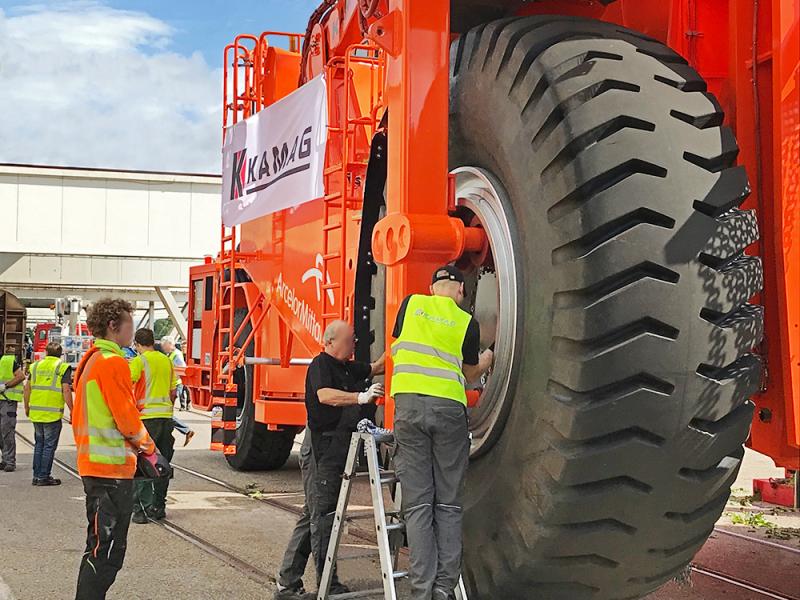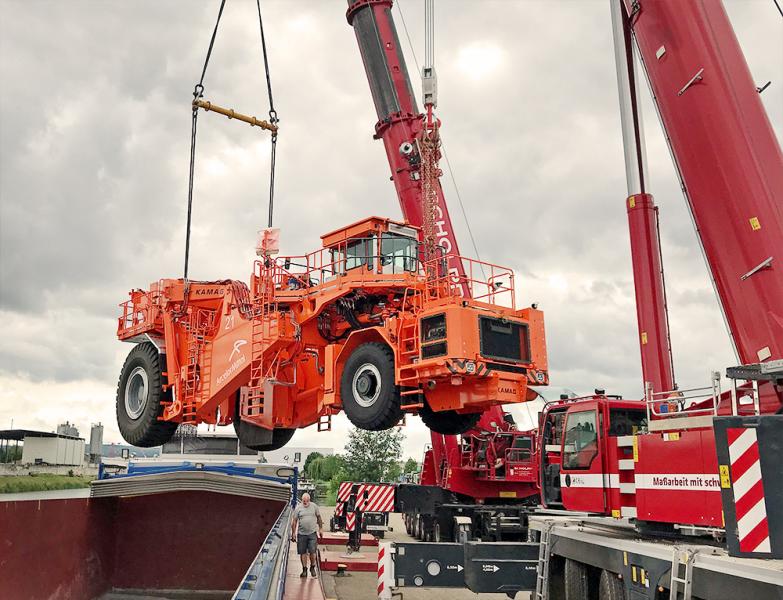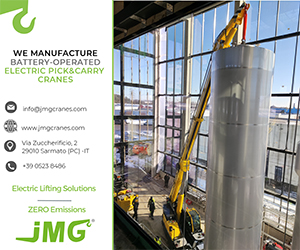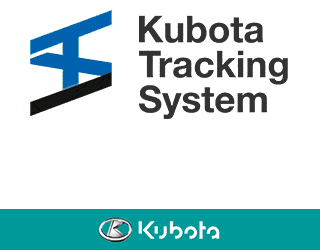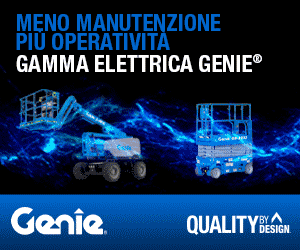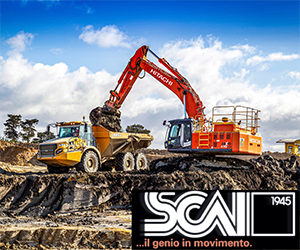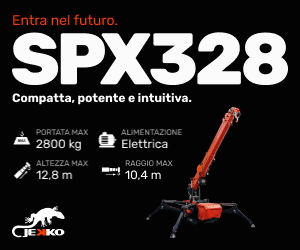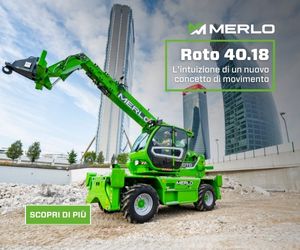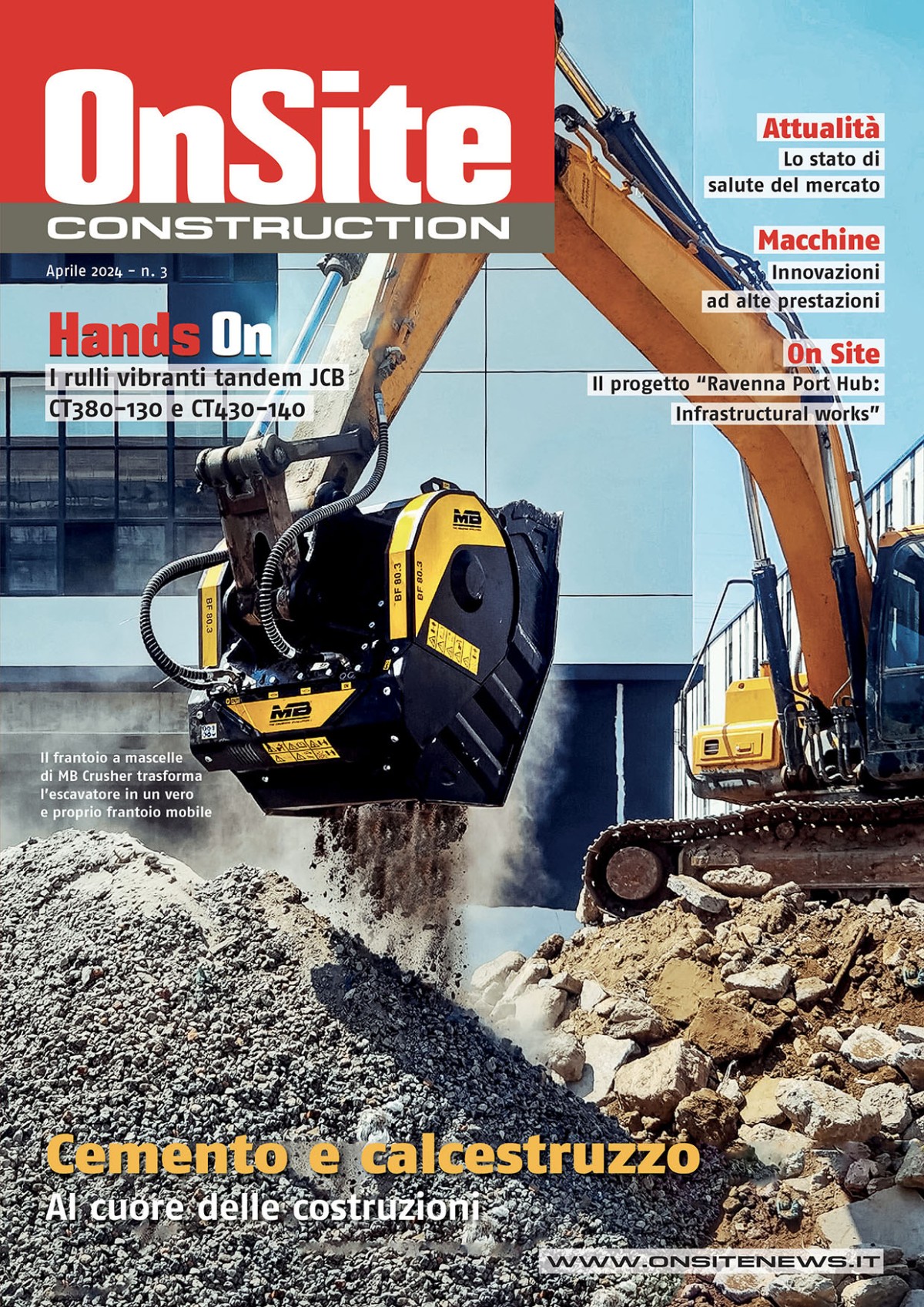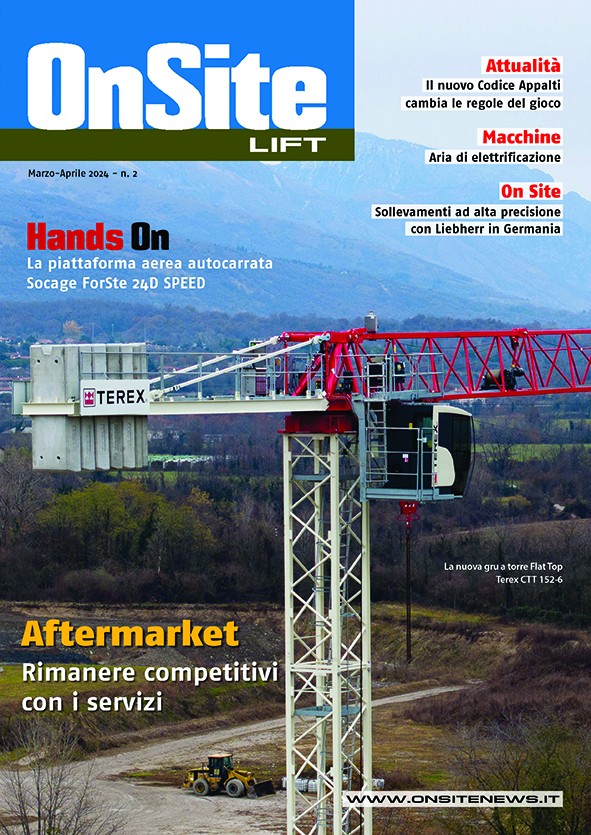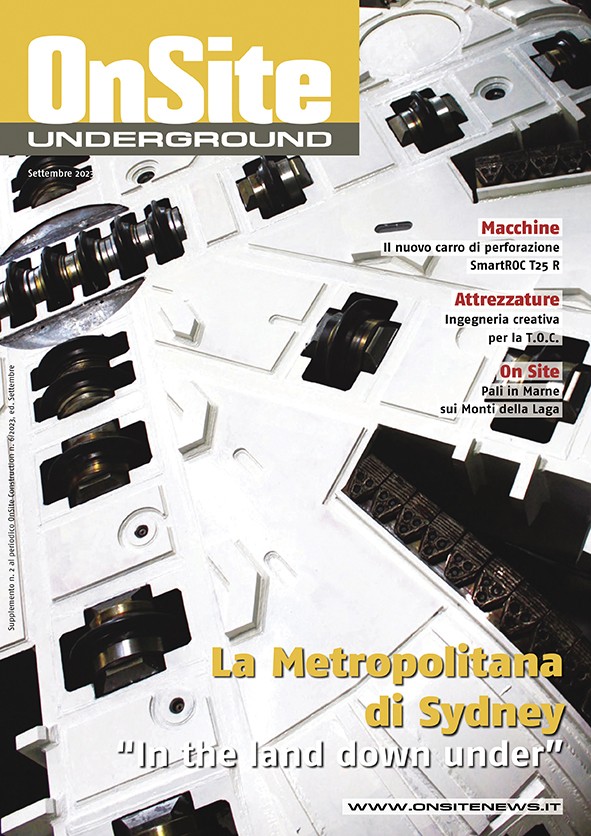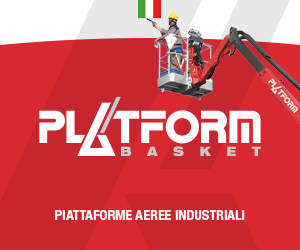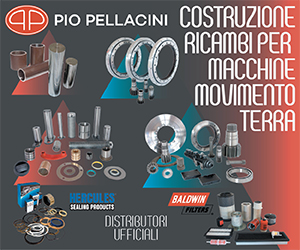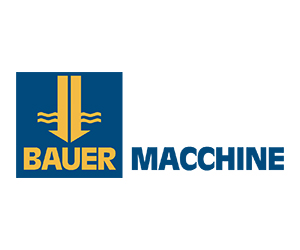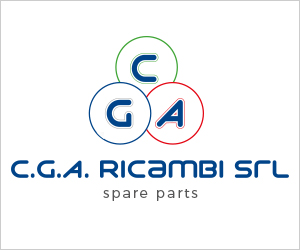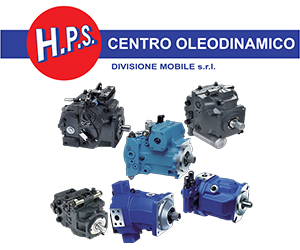Home \ International \ Superlative slab transporter:hot iron on the road
Superlative slab transporter:hot iron on the road
12/07/2019
Pubblicato da Redazione
Kamag develops slab transporter with outstanding payload and high lifting power
On Whit Monday, Kamag Transporttechnik, a company of the TII Group, sent a very special slab transporter on its way to the customer. It’s not just the heavy load, length of 71 metres and a total transport weight of around 360 tonnes the transport is extraordinary. With a payload of 150 tonnes this industrial vehicle belongs to the strongest vehicles in class. The vehicle is also testament to amazing engineering expertise.
Frieder Saam edges tentatively into the road in front of the Kamag Transporttechnik site. He carefully directs the four-axle MAN TGX 41.680 from Kübler out of the yard. Slowly but steadily the 71-metre-long, 6.6-metre-wide and 5.4-metre-high push-and-pull combination makes its way through the Ulm-Donautal industrial area, the headquarters of the specialist in heavy duty transport technology and industrial vehicles, towards the B 311 main road. Including the advance vehicle and rear guard, the combination stretches over 100 metres. Despite starting out in the early hours of a public holiday, there are plenty of interested spectators. No wonder: The heavy load is not just something very special due to its incredible dimensions. The cargo, a slab transporter with a dead weight of 132 tonnes, is a very unusual example of its kind. It's one of only a few slab transporters in the market with a comparable payload. This unique specimen is yet further proof of the outstanding capabilities of the traditional Ulm company.
Unit weights up to 22 tonnes, in stacks of seven
The customer, the steelworks of ArcelorMittal, a global leader in the steel industry, had advertised for a transport solution for slabs with a payload of 150 tonnes. Slabs are rolled blocks of iron, which are stored temporarily in this form. The customer produces slabs measuring 11.6 metres long, 2.5 metres wide and 22 centimetres high in its steelworks. This results in unit weights of around 22 tonnes. The payload required by the client is a big increase compared to its previous slab transporters and also demands more than Kamag’s transport solutions have achieved in the past.
Complete redesign of the trailing unit required
“To achieve the payload of 150 tonnes, we had to completely redesign the trailing unit”, declares Project Manager Berthold Schmidberger. The rear axle with its gigantic 40.00-57 tyres that measure twice as high as a man, also performs superbly, delivering a load capacity of 221 tonnes. The two enormous grippers, which are used to lift and stack up to seven slabs on top of each other, are also positioned on the trailing unit. They are also capable of incredible performance, lifting the full payload by 2.5 metres in 25 seconds. This was another demand from the client, so as to ensure the economic operation of the vehicle. “These are truly extreme performance times”, reports the Kamag engineer. It is all down to exceedingly powerful hydraulics.
Tried-and-tested drive components
The Kamag engineers used an existing design and drive components that have been tried and tested many times for the prime mover. The in-line six cylinder engine with its 15.2-litre cubic capacity, emissions compliant with Tier IV final, performance of 403 kW and maximum torque of 2,472 newton metres, is one example. A likewise well-proven power shift transmission delivers the power to the front axle of the slab transporter.
Fatigue calculations used for the first time
The vehicle developer broke a lot of new ground with the design of this giant. “We had to perform a fatigue calculation for a customer for the first time”, says Schmidberger, explaining the very particular challenges of the order. These calculations enable us to determine material fatigue for a specific load and over a specific period of time. Kamag had to assure the demanding client that the vehicle frame would not break for at least ten years even under the most extreme loads. A special feat of engineering, as the steelworks operator requires 5,500 operating hours a year, which is effectively round-the-clock operation.
Equipped for automated operation
Aside from the mechanical system and hydraulics, the transporter’s advanced electronics also facilitate very special functionality. It can, for example, be controlled remotely from a control station, as well as from the cab. Kamag has also fitted it with sensors that detect all the driving and working conditions of the transporter. Eventually the vehicle is meant to perform its tasks in a highly automated way. A number of necessary sensors are installed to do so, further detection of operational surroundings needs to be developed.
Strong protection against vehicle overheating
Equipping the vehicle with cutting-edge technology for automated driving makes sense. Ultimately, the working conditions in steelworks are extremely challenging for people and materials. When the slabs come out of the press their temperature is around 900 degrees. The workers should be exposed to this incredible heat as little as possible. Even for resistant material this heat is a strain. That’s why the slab transporter from Kamag is equipped with numerous heat protection plates. In addition, the tyres on the rear axle, which get really close to the glowing slabs during transport, are each filled with ten tonnes of water. The water helps to dissipate the heat that penetrates the synthetic tyres.
Many months of route planning
The technology was subjected to extensive testing following construction and coordination with the client. It was a good six months after development before the finished slab transporter was able to leave the Kamag site and set off on its way to Heilbronn. “We spent four months planning and testing the route with Spedition Kübler and getting the necessary permits and documentation in place”, says Michael Schanz from Kamag’s Internal Sales department, who is responsible for shipping the slab transporter. In addition to the MAN TGX at the front, a pushing vehicle is also used at the back of the transport: a Mercedes Actros 4160, likewise with four axles and a powerful V8 under the cab. Between them, a lifting bridge sits on two InterCombi platform trailers with twelve and ten axle lines respectively
Transport expertise from one place
The transport combination represents the bundled expertise of the TII Group, the corporate group of Heilbronn multi-entrepreneur Otto Rettenmaier, as the bridge and the two transport platforms come from Scheuerle. The Pfedelbach company is also part of the TII Group. A heavy transport like this could not be achieved with no outside expertise at all though. On the Friday before Whit Monday, two mobile cranes arrived to lift the slab transporter onto the lifting bridge. It took the teams from Kamag, Kübler and UIm vehicle crane company Rieger & Moser a whole working day to load the vehicle and make it secure for transport.
260 kilometres in one day and four nights
The heavy load needed one day and four nights to complete the 260-kilometre journey to its initial destination, the port at Heilbronn. The heavy load specialists from Kübler then moved the slab transport onto the barge. It was another five days before the transporter completed the final leg of its journey by barge to the dock at the steelworks. It will now be used to move blazing hot slabs extremely cost-effectively – thanks to the outstanding achievement of the engineers from Kamag Transporttechnik.

Ultime notizie di OnSite News
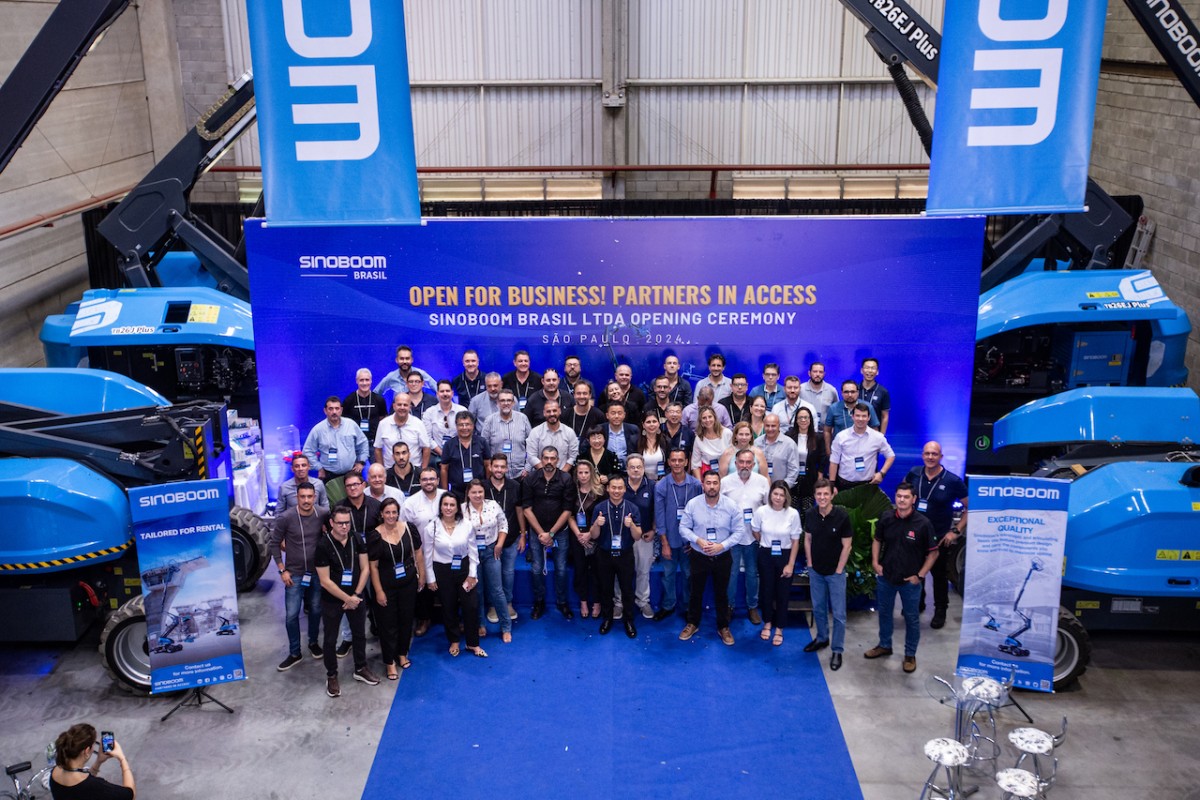
Lifting
16/05/2024
Sinoboom marks South American milestone with opening of Brazil subsidiary
Over 100 Brazilian rental company customers attended the con...
Lifting
09/05/2024
Crane Service provider takes delivery of first Tadano AC 7.450-1 all terrain crane in the Czech Republic
Crane Service provider takes delivery of first Tadano AC 7.4...

Components
26/04/2024
SVAB launches the successor to the popoular joystick Grip L8
At this year’s edition of Intermat in Paris on April 24-27,...
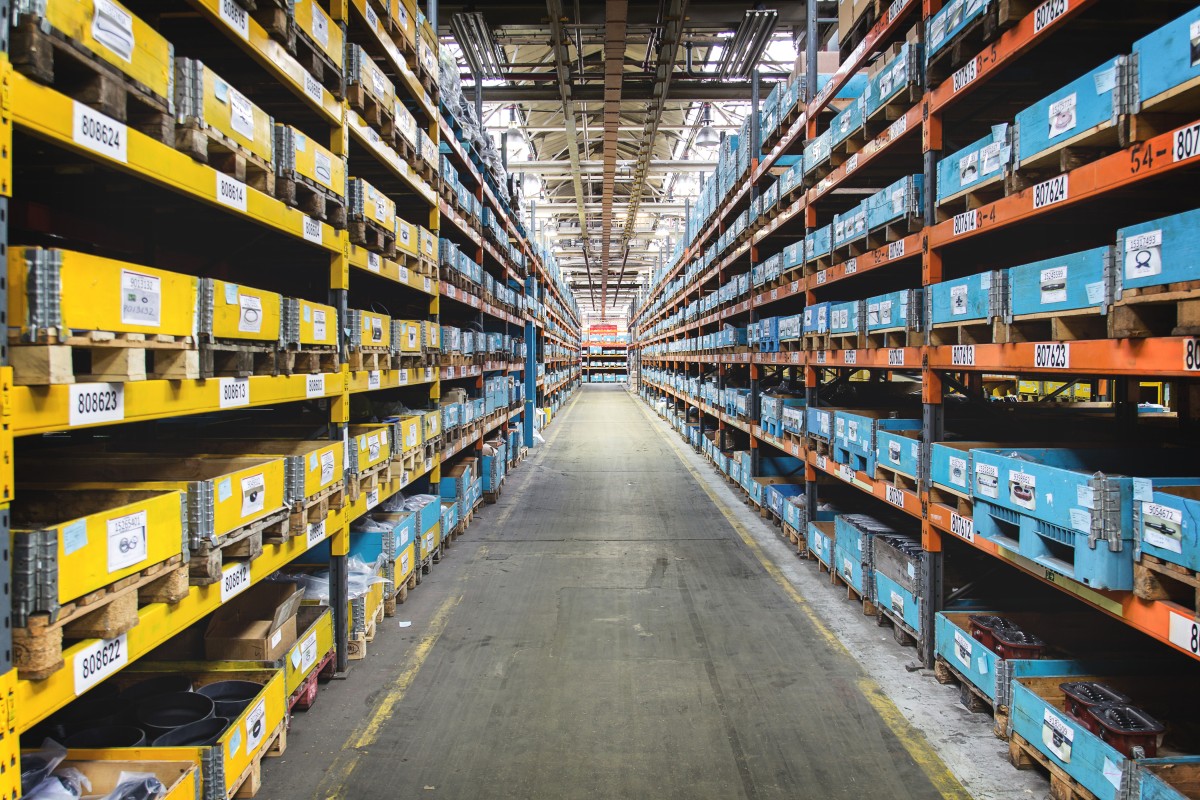
Components
25/04/2024
Genuine parts ensure articulated hauler quality and uptime
The importance of good quality, reliable parts when maintain...
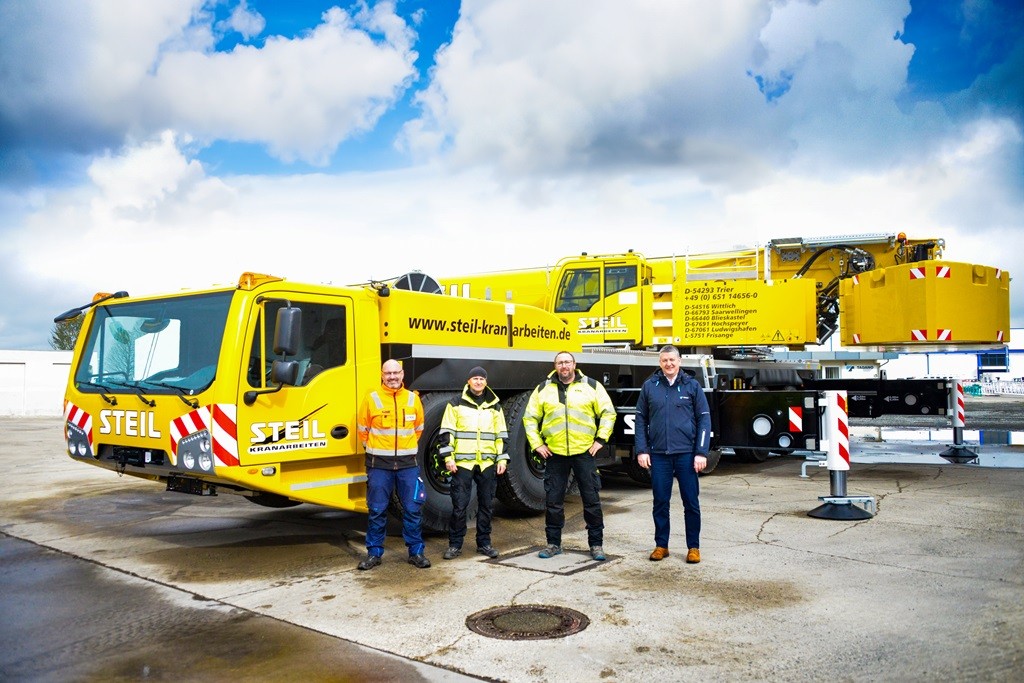
Lifting
25/04/2024
Steil takes delivery of new Tadano AC 6.300-1 all terrain crane
Steil takes delivery of new Tadano AC 6.300-1 all terrain cr...
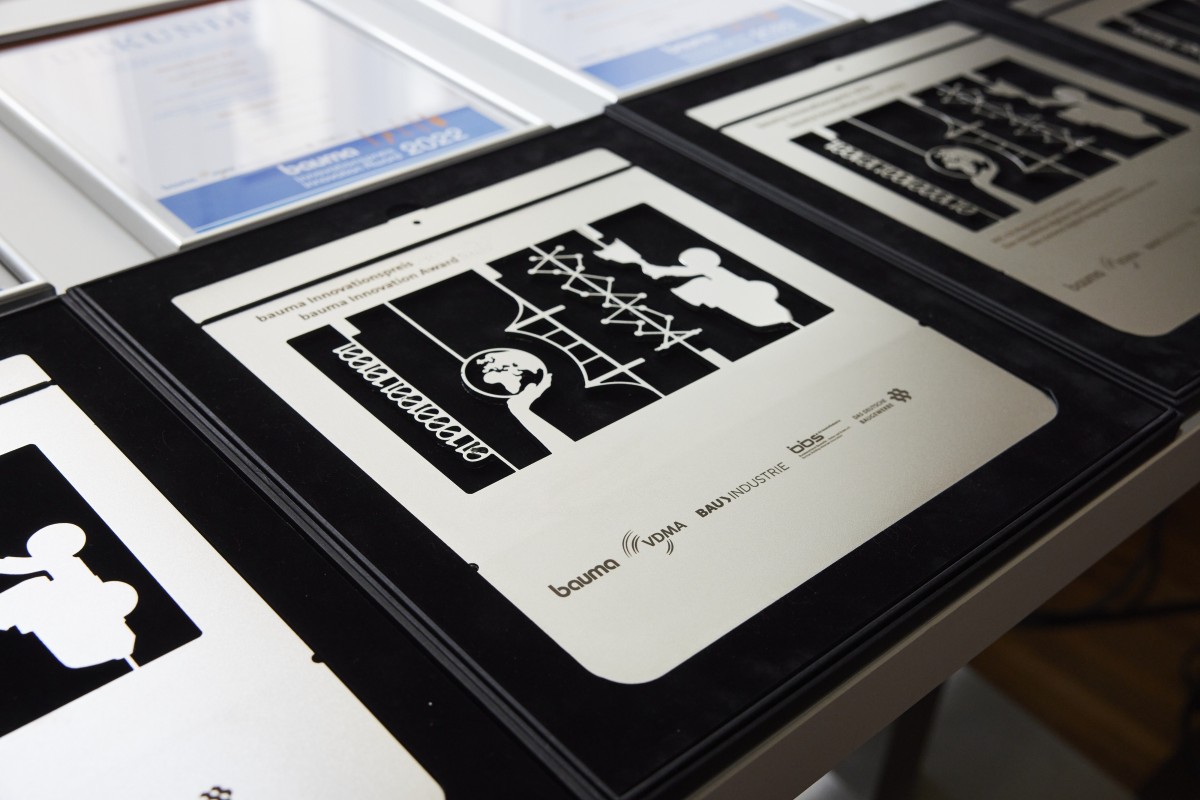
Earthmoving Machinery
23/04/2024
Bauma Innovation Award: Kick-off 2 May 2024
On the occasion of bauma 2025, the leading associations of t...
Altri International
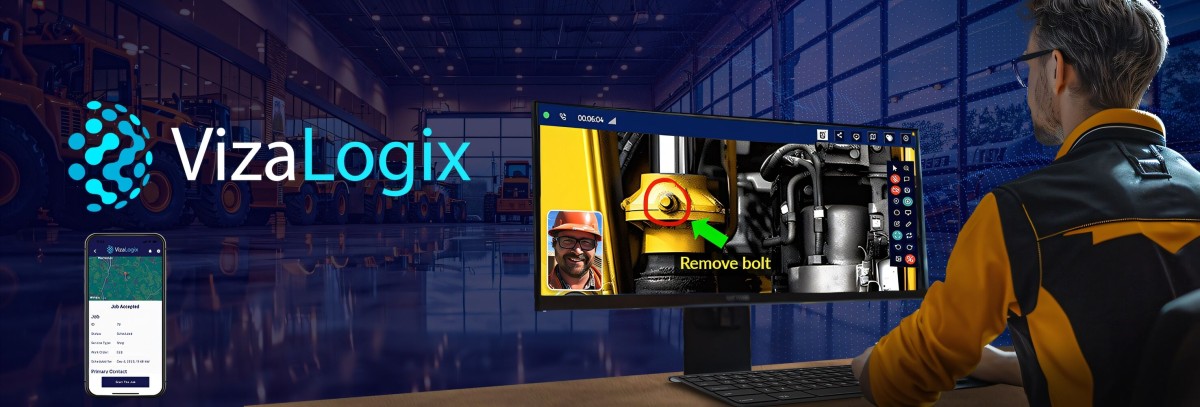
International
17/05/2024
Volvo CE has taken a 22% ownership stake in VizaLogix
Volvo CE has taken a 22% ownership stake in VizaLogix, a US-...
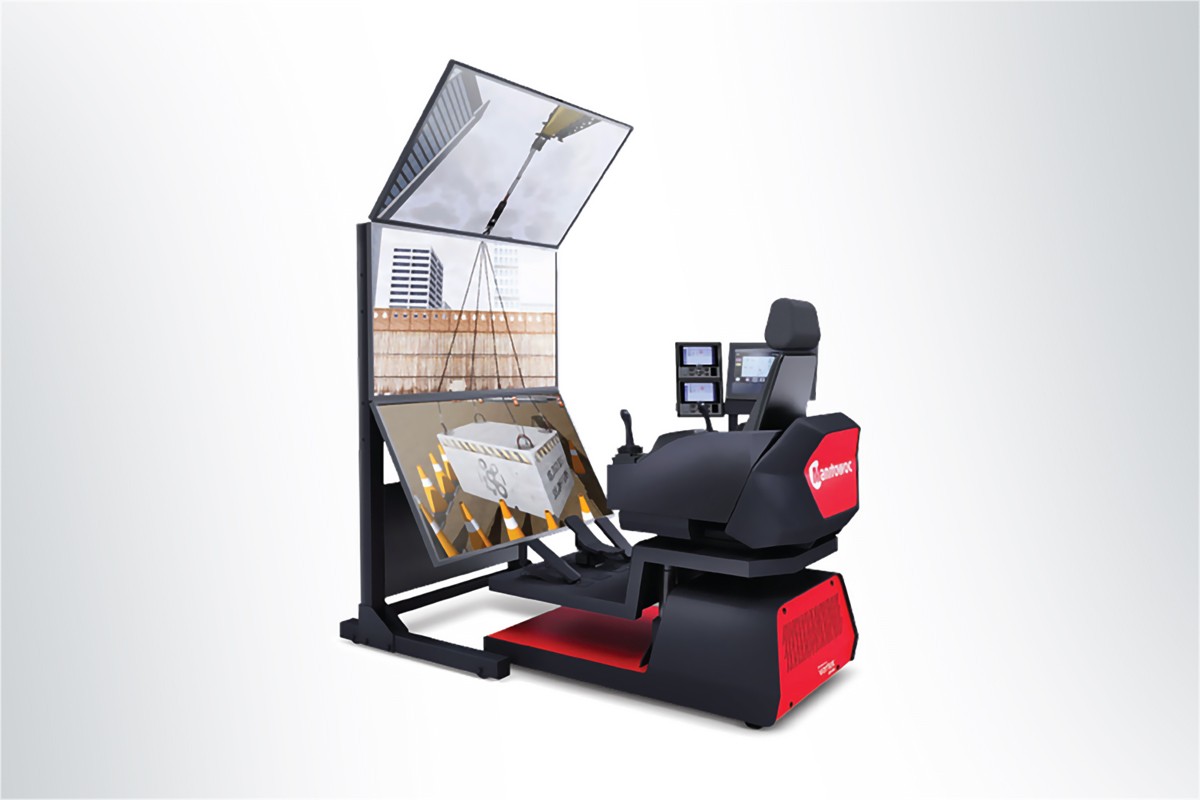
International
17/05/2024
Manitowoc donates crane simulator to IUOE’s training center in Texas
• Manitowoc has provided cranes and technical support to eve...
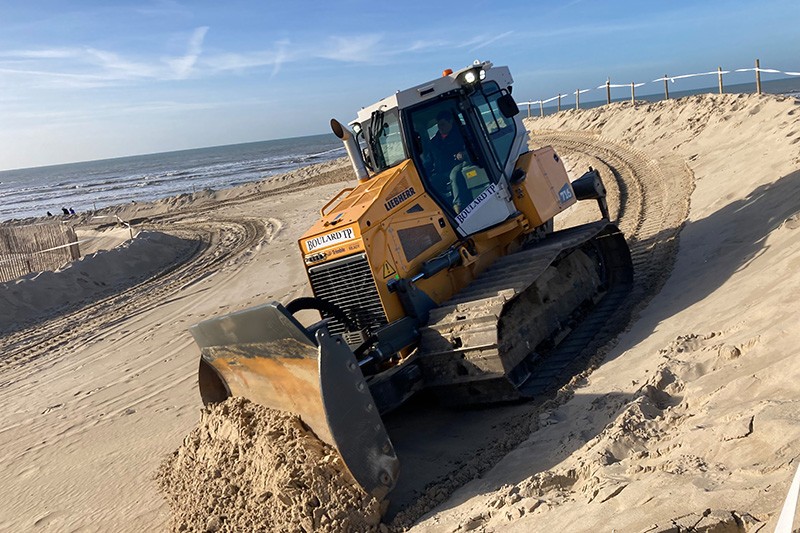
International
16/05/2024
Boulard TP banks on Liebherr Crawler Dozers
Once again, this year France was home to the biggest motorcy...

International
16/05/2024
Sinoboom marks South American milestone with opening of Brazil subsidiary
Over 100 Brazilian rental company customers attended the con...

International
15/05/2024
Hiab expands its spare parts offering
Hiab expands its spare parts offering so every customer find...
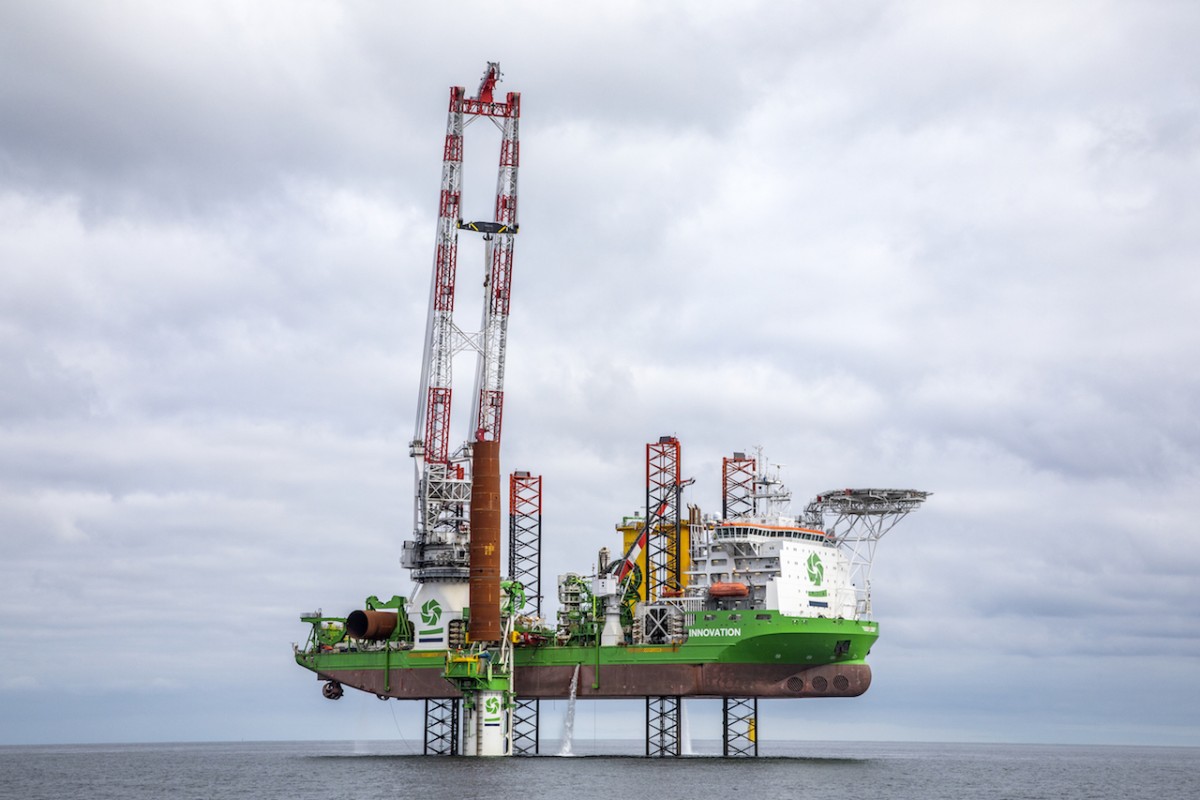
International
15/05/2024
Second wind farm with Herrenknecht OFD technology
Herrenknecht's Offshore Foundation Drilling (OFD) technology...













